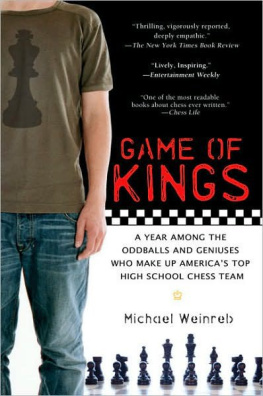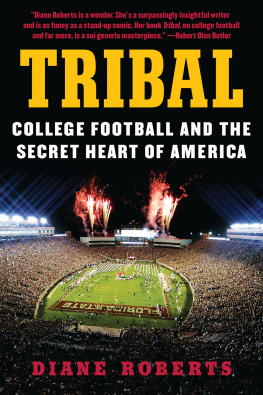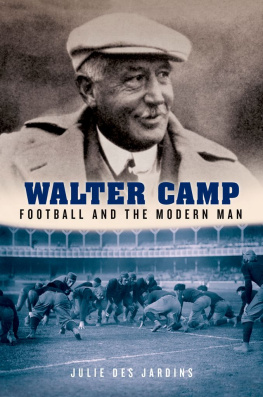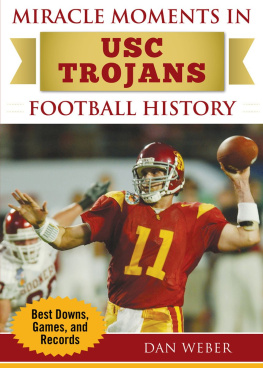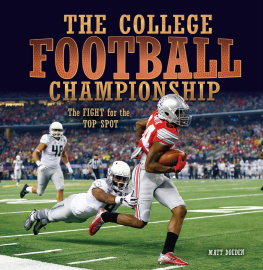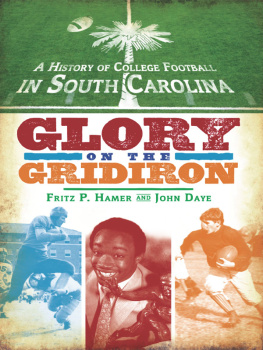Thank you for downloading this Scribner eBook.
Join our mailing list and get updates on new releases, deals, bonus content and other great books from Scribner and Simon & Schuster.
C LICK H ERE T O S IGN U P
or visit us online to sign up at
eBookNews.SimonandSchuster.com
We hope you enjoyed reading this Scribner eBook.
Join our mailing list and get updates on new releases, deals, bonus content and other great books from Scribner and Simon & Schuster.
C LICK H ERE T O S IGN U P
or visit us online to sign up at
eBookNews.SimonandSchuster.com
ALSO BY MICHAEL WEINREB
Bigger Than the Game: Bo, Boz, the Punky QB, and How the 80s Created the Modern Athlete
Game of Kings: A Year Among the Oddballs and Geniuses Who Make Up Americas Top High School Chess Team
Girl Boy Etc.: And Other Tales of Modern Love

SCRIBNER
A Division of Simon & Schuster, Inc.
1230 Avenue of the Americas
New York, NY 10020
www.SimonandSchuster.com
Copyright 2014 by Michael Weinreb
All rights reserved, including the right to reproduce this book or portions thereof in any form whatsoever. For information, address Scribner Subsidiary Rights Department, 1230 Avenue of the Americas, New York, NY 10020.
First Scribner hardcover edition August 2014
SCRIBNER and design are registered trademarks of The Gale Group, Inc., used under license by Simon & Schuster, Inc., the publisher of this work.
The Simon & Schuster Speakers Bureau can bring authors to your live event. For more information or to book an event, contact the Simon & Schuster Speakers Bureau at 1-866-248-3049 or visit our website at www.simonspeakers.com.
Interior design by Jill Putorti
Jacket design by Gregg Kulick
Jacket photographs: Ohio State Coach Woody Hayes Tony Tomsic/Contributor/ Sports Illustrated /Getty Images; University of Notre Dame Football Memorabilia Todd Rosenberg/Contributor/ Sports Illustrated /Getty Images; University of MiamiVinny Testaverde Carl Skalak/Contributor/ Sports Illustrated /Getty Images; Michigan State University SpartansBubba Smith Collegiate Images/Contributor/Getty Images; University of Alabama Coach Paul Bear Bryant Heinz Kluetmeier/Contributor/ Sports Illustrated /Getty Images; Washington State v. Oregon Steve Dykes/Stringer/Getty Images Sport/Getty Images
Library of Congress Cataloging-in-Publication Data is available.
ISBN 978-1-4516-2781-7
ISBN 978-1-4516-2784-8 (ebook)
Portions of this work appeared, in different form, on Grantland.com.
To State College, Pennsylvania My hometown
CONTENTS
A PREFACE
Discussion Topics: You The Authors Inherent Bias The Authors Repeated Attempts to Justify the Existence of a Sport That Often Defies Rational Sense Also, Cows
So maybe you already understand:
Maybe you are nine years old, and your father takes you to a college football game. You reside in the vicinity of a sprawling state university; the stadium looms on the outskirts of campus, a clunky leviathan of exposed steel beams and concrete pillars, surrounded by freshman dormitories and parking lots and acres of muddy agricultural pastureland. The roads are narrow, the traffic is suffocating, and the tailgates go on for miles, tethered to recreational vehicles and trailers and pickup trucks. Everything is so huge; even the air seems weighed down with smells, charred meat, and churned-up dirt and manure of varied origins. You pass into the stadium through Gate E and the ramps are too narrow and the people too thick (both individually, because this is rural America, and collectively, because the game is a sellout), and you stand there and wait for the arteries to clear (both figuratively and literally), and every so often, you hear adults buzzed on cheap pilsner bellow like corralled cattle to pass the time.
Maybe all of this rings familiar to you. Maybe this was your childhood, too.
* * *
For me, it goes back to 1982, when prime-time college football was not yet a regular thing, packaged by cable television into a commodified national experience. For me, it was Nebraska at Penn State, a matchup of top-ten programs in front of eighty-five thousand people, the first game in the history of this particular stadium that required lights (the lights were portable, mounted on trucks, and given to frequent short-circuiting). The home team led 140 early, and then they trailed 2421 late in the fourth quarter, and I could not see most of what happened after that, because I was too small and everyone around me was standing and I was engulfed in a thicket of down jackets and cigar smoke and pocket radio antennas and the voice of a guy named Steve was critiquing the play-calling.
At that point, my memory blends with the television replays, and because I tend to recall my childhood in snapshots, I have retained this photographic image of the stadium clock showing one minute, eighteen seconds remaining in the fourth quarter. And in conjunction with this image, I recall trying to count seventy-eight seconds in my head during the commercial time-out as Penn State awaited the kickoff for the last drive of the game, as if I might somehow be able to slow the progress of time by deconstructing it inside my own head. (Its almost as if I was already nostalgic for what was about to happen.)
There was a throw to the sideline, to a Penn State tight end who was clearly out of bounds but was ruled in bounds, for reasons that either defy explanation or raise suspicion, depending upon ones perspective; there was a throw to the end zone, to a klutzy tight end whose nickname was actually Stonehands, who cradled the pass in his arms and toppled to the ground for the game-winning touchdown. And I remember the quake and the aftershocks inside that stadium, and I remember the bacchanalia outside, and I remember listening to the radio broadcast in the car, and I remember watching the highlights on the news and on television the next morning, and I remember thinking that I would never, in the course of my life, see anything bigger than that again.
Its a difficult thing to quantify: the elation, the connection, the sense of belonging that college football provides. But then, maybe you dont need me to tell you. Maybe you already understand.
* * *
Or maybe you dont understand at all:
Maybe you attended a liberal arts college in New England, or maybe you grew up in a city where the athletes were professionals (New York, say, or Boston, or Chicago, or London). Maybe the very idea of college football resided at the far edge of your consciousness, a rural preoccupation like Garth Brooks and Peanut Buster Parfaits and moonshine, the province of southerners and state-school graduates and scrubbed fraternity boys in hooded sweatshirts. Maybe the thought of a universitys morale being tied to its football team strikes you as a fundamental failing of American society. Maybe you hear stories about corrupt recruiting and grade-fixing, and maybe you cannot understand how a sport with a long history of exploitation and brutality and scandal can still be considered a vital (and often defining) aspect of student life. Maybe you see it as a potentially crippling frivolity, or as a populist indulgence, and maybe the threat of football encroaching on the nations educational system makes you wonder how someone could possibly write an entire book extolling its cultural virtues.
* * *
And the thing is, I would like to tell you that youre wrong, but I also know that youre not entirely wrong.
* * *
Next page

